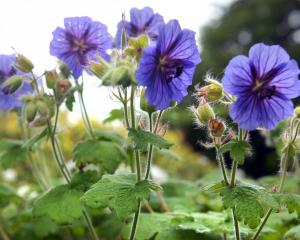
Green leaves are so because chlorophyll, the key compound in photosynthesis, absorbs all but the green light of the spectrum, which is reflected and seen by us as a green leaf. So then why are some leaves purple?Purple leaves are usually caused by a pigment called anthocyanin. Anthocyanin absorbs green and yellow light, causing them to appear deep red or purple to our eye. These leaves still contain chlorophyll, or else they couldn’t photosynthesise, but the green colouration is masked by the strong anthocyanin pigmentation.
There are a few reasons a plant would like a set of purple leaves — new leaves and seedlings often have red-purple leaves to help protect them from sun damage. Another reason is to hide from insects and herbivores.
The leaves of many tropical understorey plants have purple undersides. No-one is really sure why they are so common in these shaded environments; one hypothesis holds that the anthocyanins protect the leaves from fungal infections, and another posits that they help to sponge up free radicals caused when stray light hits the leaf.
The collection of tropical plants in the Dunedin Botanic Garden’s Winter Garden Glasshouse has some great examples of these purple-leaved stunners.
If you take a walk down the perennial long border, just left from the Gardens Corner gate, keep an eye out for the purple-leaved fennel, sedums and dahlias.
- Garden Life is produced by the Dunedin Botanic Garden. For further information contact Carla de Boer.











